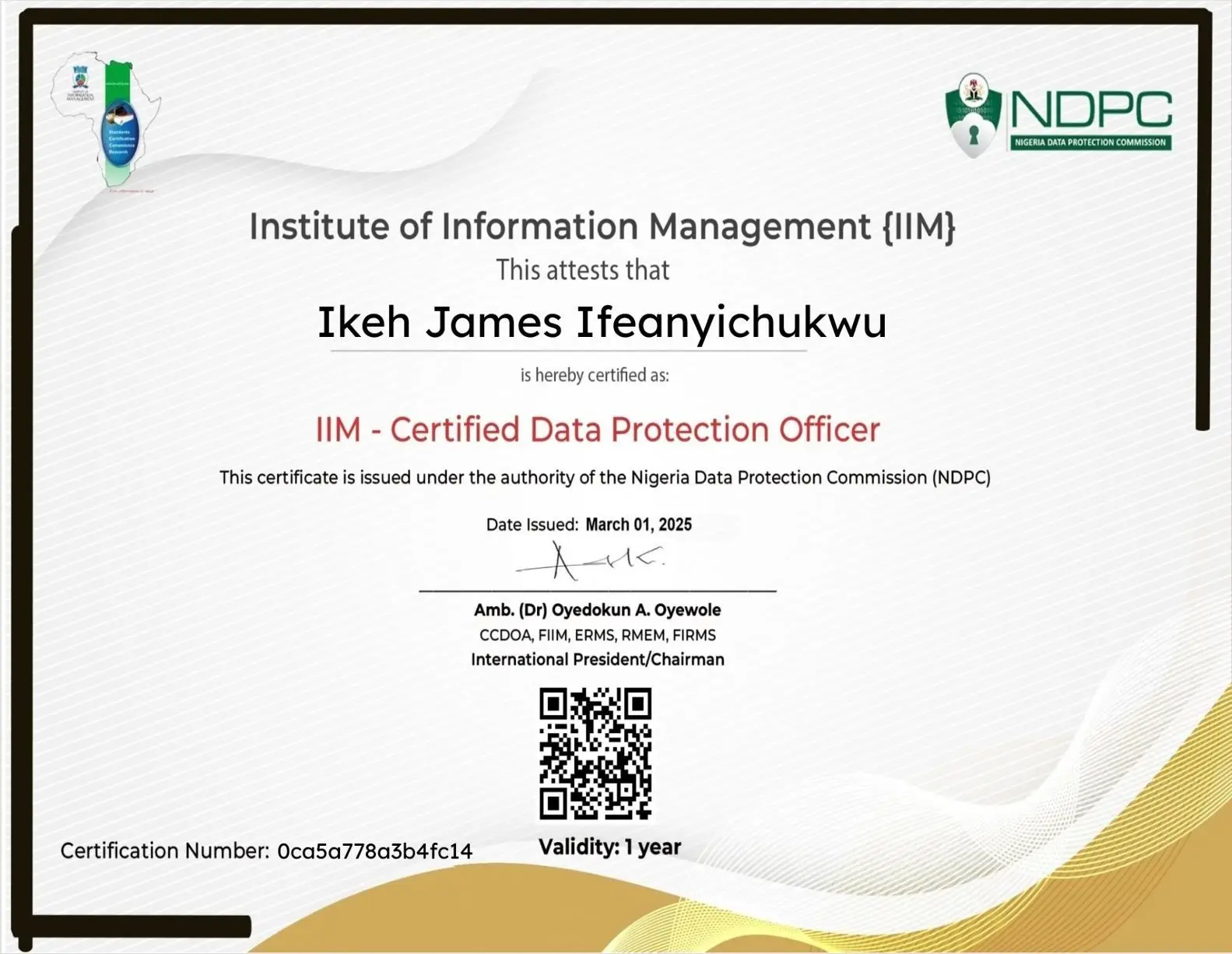The 7 Layers of Data Protection: A Modern Framework for Privacy and Security
Share

Data protection is no longer about just firewalls and passwords — it’s a multi-layered defense strategy that integrates technology, compliance, and human behavior.
In today’s privacy-conscious world, businesses must think in layers of defense, ensuring that even if one control fails, the next layer still protects sensitive data.
This 7-layer model provides a comprehensive roadmap for organizations to build resilience against breaches, misuse, and regulatory penalties.
The 7 Layers of Data Protection
Layer 1: Governance & Compliance
Every strong data protection strategy begins with governance.
This layer focuses on policies, accountability, and compliance with laws like the GDPR, NDPA, CPRA, and PIPL.
Key Actions:
- Establish a Data Protection Officer (DPO).
- Maintain a data protection policy.
- Conduct regular compliance audits.
- Keep records of processing activities (ROPAs).
Layer 2: Data Classification & Minimization
You can’t protect what you don’t know.
This layer ensures organizations identify what data they hold, where it resides, and how sensitive it is.
Key Actions:
- Classify data by sensitivity (public, internal, confidential, restricted).
- Apply data minimization principles — collect only what’s needed.
- Use data mapping tools to trace data flows across systems.
Layer 3: Access Control & Identity Management
The human factor is one of the weakest links in data protection. This layer ensures only authorized individuals can access specific data.
Key Actions:
- Implement role-based access control (RBAC).
- Enforce multi-factor authentication (MFA).
- Review and revoke access for former employees or vendors.
Layer 4: Encryption & Data Security
This is the technical core of protection. Even if attackers gain access, encryption ensures the data remains useless without the proper keys.
Key Actions:
- Use AES-256 encryption for data at rest and in transit.
- Apply TLS 1.3 for network communications.
- Rotate encryption keys regularly.
Layer 5: Monitoring, Detection & Incident Response
No system is foolproof — breaches happen. This layer focuses on early detection and swift response to minimize damage.
Key Actions:
- Deploy SIEM (Security Information and Event Management) tools.
- Monitor logs for anomalies.
- Develop a Data Breach Response Plan.
- Report breaches within regulatory deadlines (e.g., 72 hours under GDPR).
Layer 6: Employee Awareness & Training
Human error causes more than 80% of data breaches. Training is your frontline defense.
Key Actions:
- Conduct annual data protection training.
- Run phishing simulations.
- Promote a privacy-first culture across departments.
Layer 7: Continuous Improvement & Risk Assessment
Data protection is not static. This final layer emphasizes continuous adaptation to evolving threats and regulatory changes.
Key Actions:
- Conduct periodic Data Protection Impact Assessments (DPIAs).
- Update policies after major business or legal changes.
- Benchmark against frameworks like NIST Privacy Framework or ISO 27701.
Summary Table: The 7 Layers of Data Protection
| Layer | Focus | Key Practices |
|---|---|---|
| 1 | Governance & Compliance | DPO, audits, policies |
| 2 | Data Classification | Mapping, minimization |
| 3 | Access Control | MFA, RBAC, user reviews |
| 4 | Encryption & Security | AES-256, TLS, key rotation |
| 5 | Detection & Response | SIEM, breach plan, reporting |
| 6 | Awareness & Training | Employee education |
| 7 | Continuous Improvement | DPIAs, updates, benchmarking |
FAQs
1. Why use a layered approach to data protection?
Because each layer compensates for weaknesses in another — creating depth and resilience.
2. Does this model align with NDPA or GDPR?
Yes. Each layer maps directly to core principles of lawfulness, integrity, confidentiality, and accountability under GDPR and NDPA.
3. How often should companies review their data protection layers?
At least annually, or whenever new regulations, technologies, or mergers occur.
4. Can SMEs apply this 7-layer framework?
Absolutely. It’s scalable, meaning smaller firms can start with basic controls and build over time.
Conclusion
Data protection isn’t achieved through a single control — it’s built layer by layer.
From governance and encryption to human awareness and continuous improvement, the 7 Layers of Data Protection create a resilient, adaptive defense against modern privacy risks.
Whether you’re an SME or global enterprise, this layered model ensures that even if one wall falls, your fortress of privacy stands strong.



























